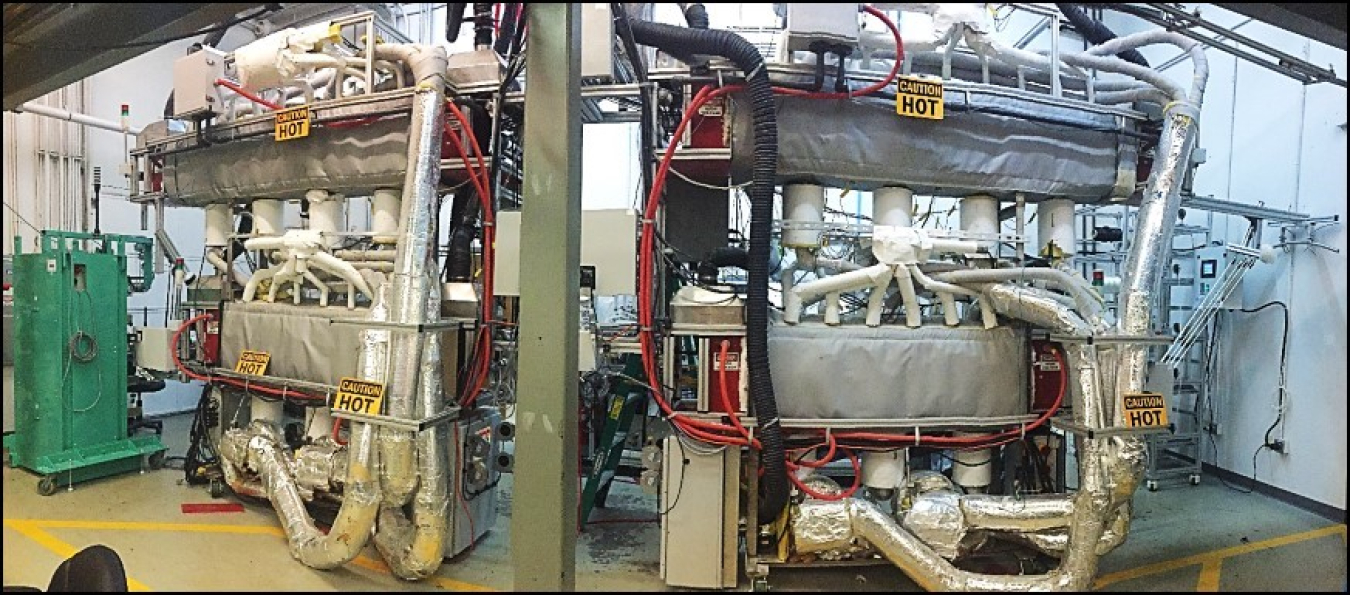
Plasma oxidation oven. Photo Courtesy: RMX Technologies
With the potential to reduce the weight of vehicle components by up to 60%, carbon fiber composites is one of the most promising lightweight materials available to improve vehicle efficiency. However, its current inputs and manufacturing processes are expensive, severely limiting its use in most high-volume vehicle models. Fortunately, a new manufacturing technique based on research supported by the Vehicle Technologies Office may be able to cut the total cost by 20% while also using 75% less energy in the oxidation stage and producing carbon fiber three times faster than conventional ones.
This manufacturing technique, called plasma oxidation, stems from a research project with Oak Ridge National Laboratory (ORNL) and RMX Technologies that started in 2004.
To process precursors (the feedstock or starter material) for carbon fiber, manufacturers need to first oxidize or stabilize (crosslink in the presence of oxygen) the material so that it will survive the subsequent process. Most carbon fiber production uses polyacrylonitrile (PAN), a form of acrylic, as the precursor. The conventional process uses very large thermal ovens that require a tremendous amount of energy and use molecular oxygen from the air that diffuses into the PAN. This process is energy inefficient and expensive, making up about 18% of carbon fiber’s overall manufacturing cost. In general, this technique takes between 80 to 120 minutes, creating a bottleneck in the production process.
In contrast to conventional ovens, plasma oxidation ovens generate highly reactive species from the air that react with the precursor much faster than molecular oxygen. This results in a significantly accelerated oxidative process that is both faster and more efficient. This process is so efficient that it can reduce the processing time to 20 to 30 minutes and uses 75% less energy than conventional oxidation ovens. In addition, plasma oxidation ovens are one-third the length of thermal ovens with the same throughput, which could enable smaller production facilities. Because of these advantages, plasma oxidation has the potential of reducing the cost of manufacturing carbon fiber by 20%.
The research that resulted in this technology blended national laboratory and private expertise. ORNL conducted the necessary research into carbon fiber production, analysis, and development, while RMX developed the actual atmospheric plasma technology and hardware. After developing the basic technology, in 2014, the team designed and built a continuously operating plasma oxidation line that runs multiple tows (or spools) of carbon fiber with a capacity of 1 metric ton per year. This output is allowing them to validate the technology at preproduction levels, demonstrating good quality fiber at faster rates. In some cases, plasma oxidation produces a better quality carbon fiber than conventional processes (using equal feedstocks), which can result in better mechanical properties. Since operation began in 2014, the technology has operated for hundreds of hours without major failures, proving its robustness.
Based on this success, in 2015, RMX Technologies formed a subsidiary, 4M Industrial Oxidation, which is now commercializing plasma oxidation. They are collaborating with C.A. Litzler Co., an oven manufacturing company, and Dralon GmbH, an acrylic fiber producer, to bring it to market. Currently, Litzler is preparing to offer ovens using this technology to customers.
From basic science to commercialization, the Vehicle Technologies Office’s support has catalyzed the development of this innovative technique, helping bring carbon fiber closer to the goal of $5 per pound than ever before.
The Vehicle Technologies Office (VTO) supports research, development (R&D), and deployment of efficient and sustainable highway transportation technologies to improve vehicles’ fuel economy and minimize petroleum use. These technologies will increase Americans’ energy security, lower costs, and reduce environmental impacts.
